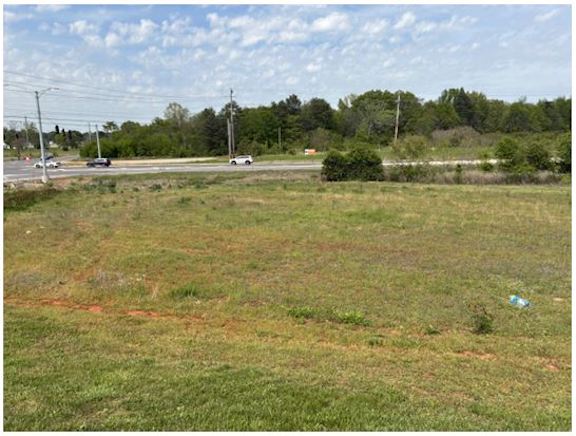Rural families struggle without high-speed internet access
Published 3:00 pm Saturday, April 11, 2020

- After enduring more than 10 years of unreliable internet service at her home in rural Carroll County, Emily Harsh, a software engineer with Netflix, rented a room in a former law firm in Carrollton, Ohio, where she was still settling in on Oct. 30, 2019. Although she has to pay additional rent for the office, her internet speed increased from an average of 5 megabits per second to 110 mbps.
MONTGOMERY, Ala. (AP) — It’s an about 15-minute drive from Pamela Rush’s home to her children’s schools. A family of three, their White Hall home is situated in the northern part of Lowndes County — a rural area of 725 square miles where the majority of residents live without access to high speed internet.
When Alabama’s public schools were first ordered closed through April 6, Rush started making the daily trip to pickup two meals per child. Using her sister’s old car, in desperate need of a tune up because “it doesn’t do anything but eat up gas,” meeting this basic need felt like a hassle at times, but it was manageable.
Trending
Now, with schools closed through the end of the year, Rush, like thousands of families throughout the state, is worried. More than not having internet in their home, Rush doesn’t feel prepared to help her kids with the paper packet assignments their schools have assigned.
“I didn’t finish school myself,” she explained.
Nine of Alabama’s 67 counties show less than 30% of those areas have access to broadband. In Lowndes, that rate is about 18%, but the quality is suspect depending on the time of day and when factoring in the high rate of poverty many students live in (69%), access does not equate to ownership.
While all of Alabama’s public schools have high speed internet and the schools in Lowndes County have public WiFi, Rush’s family lives on her monthly social security benefits, so the family doesn’t even have a smart phone to connect with.
“I’m worried about how they are going to do because I don’t have anybody to help them,” Rush said. “They need some help.”
According to a study by Microsoft in 2018, about 3.3 million Alabamians do not use the internet at broadband speeds. Based off survey responses from district leaders, state superintendent Eric Mackey said that about 60% reported that even with devices for each student, they do not have the ability to provide quality online learning to their students.
Trending
Availability does not lead to equity.
In Perry County, Alabama’s county with the least access to high speed internet, Superintendent John Heard said each of his students has a device and they can connect to the WiFi at the district’s two K-12 schools.
Additionally, he has ordered devices for 10 school buses that will outfit each with WiFi that up to 50 students can connect to. The hope is to have that order in and the buses out in neighborhoods starting next week.
The high rate of poverty his students live in — just under 80% — allowed his district to provide each student with a device through a grant about five years ago. The local funding received for the tiny, rural district is minimal though, meaning the $13,000 spent on the buses could become a financial toll if there isn’t relief reimbursement.
Perry County has experienced a 15% decrease in its population the past decade and there is little to no industry within the county line to bring in tax revenue.
The Hardee’s recently closed, Heard said.
Most of his parents, he said, travel to bigger cities for work and even if they are home with students, “Most parents really can’t handle some of the math students are doing in high school.”
About seven miles outside the city limits, Heard said the only access to internet at his home is through satellite, which comes with a hefty price tag that he knows most families in Perry County cannot afford.
While all districts throughout the state and country are struggling to adjust to this new reality, rural and impoverished districts like Perry County face additional hurdles.
In March, Gov. Kay Ivey’s office announced 20 grants totaling more than $9.5 million would be provided to Alabama communities to increase broadband access. The funds come from the Alabama Department of Economic and Community Affairs, which created by the Alabama Legislature in 2018.
“Availability of high-speed internet has always been vital, but the events of the past several weeks magnify just how imperative it is that all Alabamians have access to broadband. … As our day-to-day way of living has been impacted over the past few weeks, it has underscored the value and necessity of high-speed broadband services,” Ivey said in a news release.
None of the 20 grants apply to Perry County, though.
“There has been no emphasis to get broadband out in these rural areas,” Superintendent Heard said. There’s been discussions, strategic planning, but no action, he said.
It may not be profitable for companies, but high speed-internet is “just as essential now for a student to be competitive as electricity is,” he said. “We live in a global society. It’s a global world now and to be on an equal playing field, access is a great equalizer. It’s the next most important thing we could focus on in terms of equity.”
“We don’t want to leave 20 to 30% of our population behind just because of where they live,” he added.





